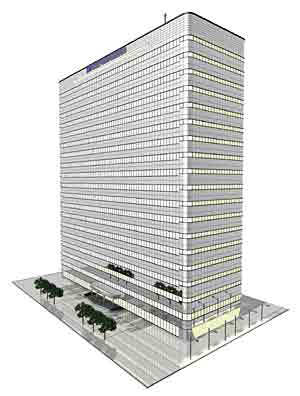The Essential Design Element for Any Office Space
Efficiency vs. Value
Efficiency is highly quantitative. It describes the cost of producing something—in energy, time, money—in a manner that gets more of something for less. To create system efficiencies, the current performance of the lighting system or HVAC system must be examined and improved. Achieving better system efficiency will reduce operational expenses, but a more efficient building is not necessarily a better place to work. The impact of system efficiency on the office environment depends upon the methods employed to achieve it.
Value is a relative term that provides a comparison for buildings and the ways they are designed. The value of an office building to an organization can describe the cost/square foot, productive capacity, sustainability, and its overall ability to facilitate communication and meet organizational needs. An office space’s value is defined by whether it creates an enjoyable, productive work environment, while sending the right corporate message to clients and employees.
Multiple methods for achieving greater system efficiencies have been employed over the years. While each of the following was successful in reducing operational expenses, the value of the space was damaged as a direct result of its more efficient design.
HVAC Efficiency
Originally, windows provided the climate control in buildings. With the introduction of HVAC systems, fewer windows were designed into commercial projects, reducing the potential of leaks and thermal transmittance. This self-contained environment allowed buildings to heat and cool themselves more efficiently, without being forced to accommodate the influence of outdoor elements. Improved HVAC efficiency was achieved, but it cost the commercial space the presence of daylight and outdoor views.
In office buildings, the presence of daylight and views has been linked to improved employee mood, motivation, satisfaction, health, and productivity. In European commercial buildings, the access to daylight and the connection to the outdoors is a fundamental design element that has been manifested in the construction doctrine “no employee office area can exist more than 6 meters away from a window.” In the United States, the incorporation of daylight and views is recognized by the LEED™ (Leadership in Energy and Environmental Design) rating system as an element of sustainable design, enhancing the sustainability of the space by making it a more productive and healthy environment for building occupants.
|
An office space with few windows may have a lower heating bill, but it may also have higher absenteeism and turnover ratios, less healthy employees who are less excited to come to work every day and are less productive when they get there. This space is efficient, but its value to the organization and its ability to support organizational needs is low.










